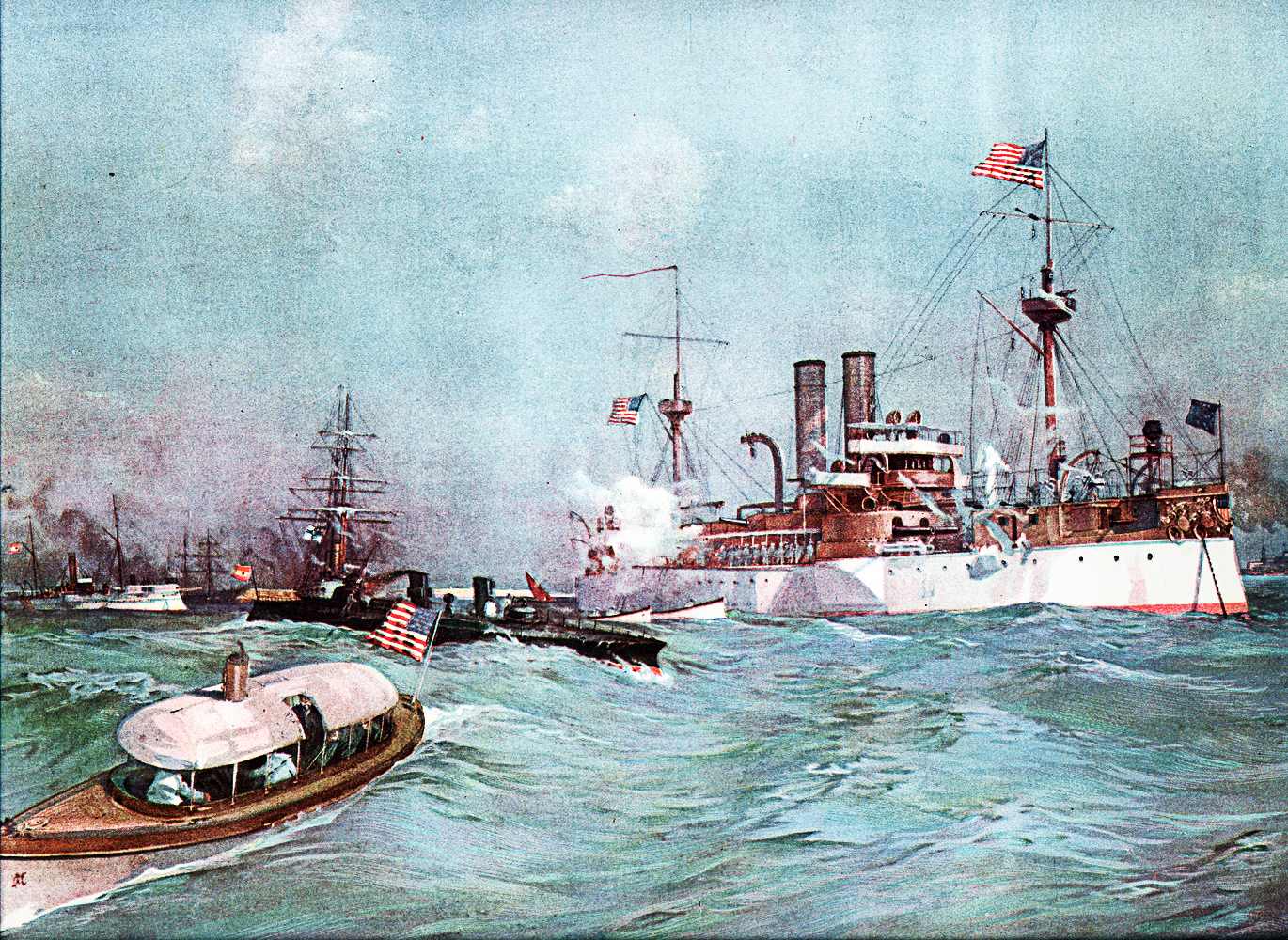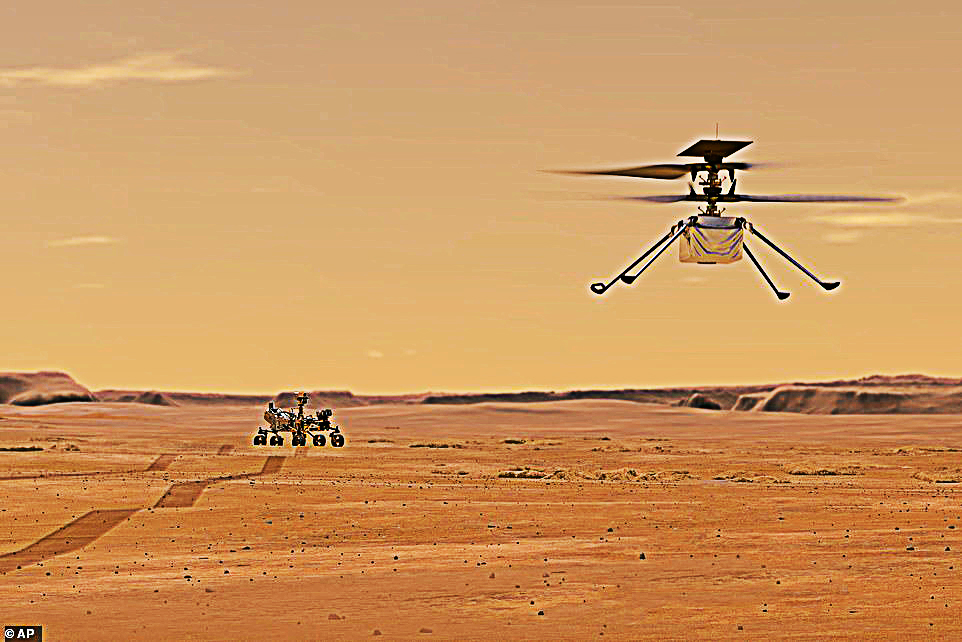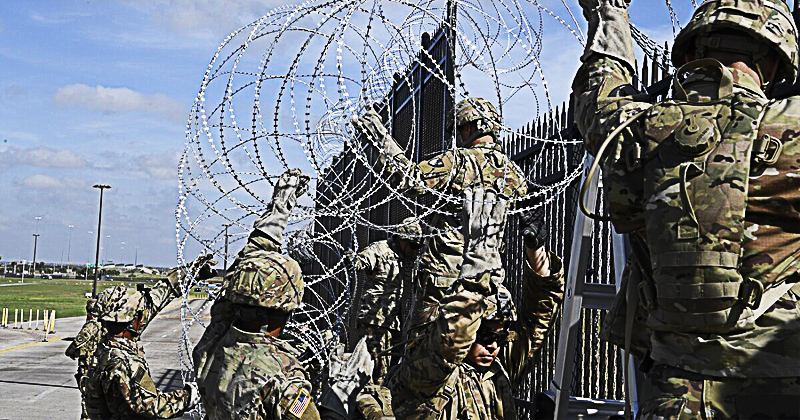 Mr. Answer Man Please Tell Us: What Is the Posse Comitatus Act?
Mr. Answer Man Please Tell Us: What Is the Posse Comitatus Act?
Summary
The Constitution permits Congress to authorize the use of the militia “ to execute the Laws of the Union, suppress Insurrections and repel Invasions”. And it guarantees the states protection against invasion or usurpation of their “republican form of government” and, upon the request of the state legislature, against “domestic violence.” These constitutional provisions are reflected in the Insurrection Acts, which have been invoked numerous times both before and after passage of the Posse Comitatus Act, 18 U.S.C. Section 13 85, in 1878. Congress has also enacted a number of statutes that authorize the use of land and naval forces to execute their objective.
The Posse Comitatus Act outlaws the willful use of any part of the Army or Air Force to execute the law unless expressly authorized by the Constitution or an act of Congress. History supplies the grist for an argument that the Constitution prohibits military involvement in civilian affairs subject to only limited alterations by Congress or the President, but the courts do not appear to have ever accepted the argument unless violation of more explicit constitutional command could also be shown. The express statutory exceptions include the legislation that allows the President to use military force to suppress insurrection or to enforce federal authority, 10 U.S.C. Sections 251-255, and laws that permit the Department of Defense to provide federal, state and local police with information, equipment, and personnel, 10 U.S.C. §§271-284
Case law indicates that “execution of the law” in violation of the Posse Comitatus Act occurs
(a) when the Armed Forces perform tasks assigned to an organ of civil government, or
(b) when the Armed Forces perform tasks assigned to them solely for purposes of civilian government. Questions concerning the act’s application arise most often in the context of assistance to civilian police.
At least in this context, the courts have held that, absent a recognized exception, the Posse Comitatus Act is violated when
(1) civilian law enforcement officials make “direct active use” of military investigators; or
(2) the use of the military “pervades the activities” of the civilian officials; or
(3) the military is used so as to subject “citizens to the exercise of military power which was regulatory, prescriptive, or compulsory in nature.“
The act is not violated when the Armed Forces conduct activities for a military purpose.
The language of the act mentions only the Army and the Air Force, but it is applicable to the Navy and Marines by virtue of administrative action and commands of other laws. The law enforcement functions of the Coast Guard have been expressly authorized by act of Congress and consequently cannot be said to be contrary to the act. The act has been applied to the National Guard when it is infederal service, to civilian employees of the Armed Forces, and to off-duty military personnel. The actprobably only applies within the geographical confines of the United States, butsupplemental provisions of 10 U.S.C. §§271-284 appear to apply worldwide.
Finally, the act is a criminal statute under which there has been but a handful of known prosecutions. Although violations will on rare occasions result in the exclusion of evidence, the dismissal of criminal charges, or a civil cause of action, as a practical matter compliance is ordinarily the result of military self-restraint.
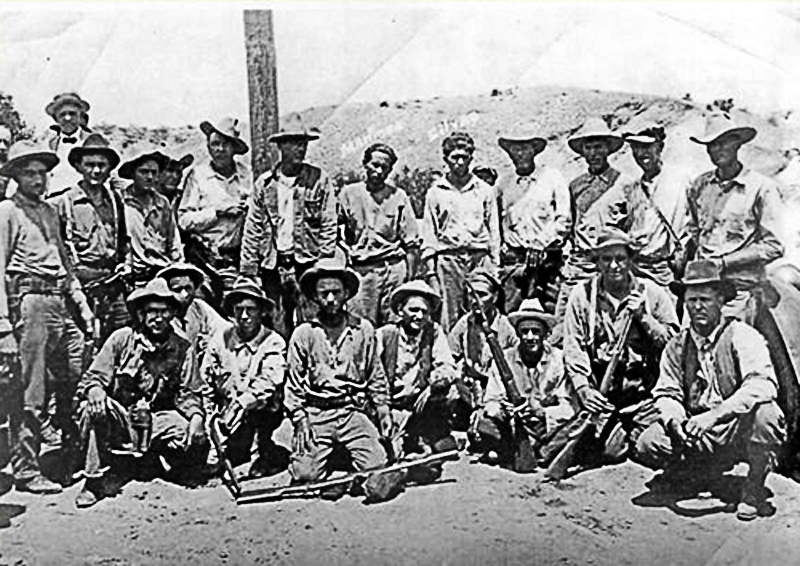
When the Act Does Not Apply
Constitutional Exceptions: The Posse Comitatus Act does not apply “in cases and under circumstances expressly authorized by the Constitution”, 18 U.S.C. § 1385. It has been observed that the Constitution contains no provision expressly authorizing the use of the military to execute the law, that the exception was included as part of a face-saving compromise, and that consequently it should be ignored. The older commentaries suggest that the word “expressly” must be ignored, for otherwise in their view the Posse Comitatus Act is a constitutionally impermissible effort to limit the powers of the President. The regulations covering the use of the armed forces during civil disturbances do not go quite that far, but they do assert two constitutionally based exceptions - sudden emergencies and protection of federal property. The question of whether the constitutional exception includes instances where the President is acting under implied or inherent constitutional powers is one the courts have yet to answer.
Statutory Exceptions - Generally: The Posse Comitatus Act does not apply where Congress has expressly authorized use of the military to execute the law. Congress has done so in three ways, by giving a branch of the armed forces civilian law enforcement authority, by establishing general rules for certain types of assistance, and by addressing individual cases and circumstances with more narrowly crafted legislation. Thus it has vested the Coast Guard, a branch of the armed forces, with broad law enforcement responsibilities. Second, over the years it has passed a fairly extensive array of particularized statutes, like those permitting the President to call out the armed forces in times of insurrection and domestic violence, 10 U.S.C. §§ 331-335. Finally, it has enacted general legislation authorizing the armed forces to share information and equipment with civilian law enforcement agencies, 10 U.S.C. §§ 371-382.
These last general statutes were crafted to resolve questions raised by the so-called Wounded Knee cases (see below). The legislation contains both explicit grants of authority and restrictions on the use of that authority for military assistance to the police -- federal, state and local -- particularly in the form of information and equipment, 10 U.S.C. §§ 371-382. Section 371 specifically authorizes the armed forces to share information acquired during military operations and in fact encourages the armed forces to plan their activities with an eye to the production of incidental civilian benefits. The section allows the use of military undercover agents and the collection of intelligence concerning civilian activities only where there is a nexus to an underlying military purpose. Under sections 372 through 374, military equipment and facilities may be made available to civilian authorities; members of the armed forces may train civilian police on the operation and maintenance of equipment and may provide them with expert advice; and military personnel may be employed to maintain and operate the equipment supplied.
The authority granted in sections 371-382 is subject to three general caveats. It may not be used in any way that could undermine the military capability of the United States; the civilian beneficiaries of military aid must pay for the assistance; and the Secretary of Defense must issue regulations to ensure that the authority of sections 371 to 382 does not result in use of the armed forces to make arrests or conduct searches and seizures solely for the benefit of civilian law enforcement.
Military Purpose: The armed forces, when in performance of their military responsibilities, are beyond the reach of the Posse Comitatus Act and its statutory and regulatory supplements. Neither the Act nor its legislative history resolves the question of whether the Act prohibits the Army from performing its military duties in a manner which affords incidental benefits to civilian law enforcement officers. The courts and commentators believe that it does not. As long as the primary purpose of an activity is to address a military purpose, the activity need not be abandoned simply because it also assists civilian law enforcement efforts.
Willfully Execute the Laws: The Act is limited to “willful” misuse of the Army or Air Force. The Senate version of the original Act would have limited proscription to “willful and knowing” violations, 7 Cong. Rec. 4302 (1878); the House version had no limitation, 7 Cong. Rec. 4181 (1878). The compromise which emerged from conference opted to forbid only willful violations, but nothing in the legislative history explains what the limitation means. It seems unlikely that a court would convict for anything less than a deliberate disregard of the law's requirements.
When has the Army or Air Force been used “to execute the laws”? Existing case law and commentary indicate that “execution of the law” in violation of the Posse Comitatus Act occurs
(a) when the armed forces perform tasks ordinarily assigned not to them but to an organ of civil government, or
(b) when the armed forces perform tasks assigned to them solely for purposes of civilian government. While inquiries may surface in other contexts, such as the use of the armed forces to fight forest fires or to provide assistance in the case of other natural disasters, Posse Comitatus Act questions arise most often when the armed forces assist civilian police.
The tests used by most contemporary courts to determine whether military forces have been used improperly as police forces in violation of the Posse Comitatus Act were developed out of disturbances in 1973 at Wounded Knee on the Pine Ridge Indian Reservation in South Dakota and inquire:
(1) whether civilian law enforcement officials made a direct active use of military investigators to execute the law;
(2) whether the use of the military pervaded the activities of the civilian officials; or
(3) whether the military was used so as to subject citizens to the exercise of military power which was regulatory, prescriptive, or compulsory in nature.
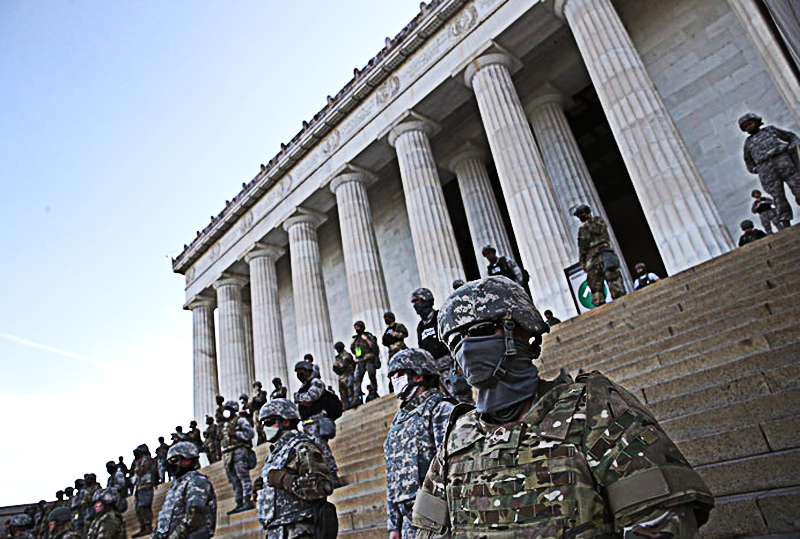
Military Coverage
Navy and Marines: The Posse Comitatus Act proscribes use of the Army or the Air Force to execute the law. It says nothing about the Navy, the Marine Corps, the Coast Guard, or the National Guard. The courts have generally held that the Posse Comitatus Act by itself does not apply to the Navy or the Marine Corps. They maintain, however, that those forces are covered by similarly confining administrative and legislative supplements, which appear in the Department of Defense (DoD) Directive.
Coast Guard: The Posse Comitatus Act likewise says nothing about the Coast Guard. The Coast Guard is a branch of the armed forces, located within the Department of Homeland Security, 14 U.S.C. § 1 (as amended), but relocated within the Navy in time of war or upon the order of the President, 14 U.S.C. § 3. The Act will apply to the Coast Guard while it remains part of the Department of Homeland Security. While part of the Navy, it is subject to the orders of the Secretary of the Navy, 14 U.S.C. § 3, and consequently to any generally applicable directives or instructions issued under the Department of Defense or the Navy. As a practical matter, however, the Coast Guard is statutorily authorized to perform law enforcement functions, 14 U.S.C. § 2. Even while part of the Navy its law enforcement activities would come within the statutory exception to the posse comitatus restrictions, and the restrictions applicable to components of the Department of Defense would only apply to activities beyond those authorized.
National Guard: The Act is silent as to what constitutes “part” of the Army or Air Force for purposes of proscription. There is little commentary or case law to resolve questions concerning the coverage of the National Guard, the Civil Air Patrol, civilian employees of the armed forces, or regular members of the armed forces while off duty.
Strictly speaking, the Posse Comitatus Act predates the National Guard only in name for the Guard “is the modern Militia reserved to the States by Art. I, § 8, cls.15, 16, of the Constitution” which has become “an organized force, capable of being assimilated with ease into the regular military establishment of the United States”, Maryland v. United States, 381 U.S. 41, 46 (1965). There seems every reason to consider the National Guard part of the Army or Air Force, for purposes of the Posse Comitatus Act, when in federal service. When not in federal service, historical reflection might suggest that it is likewise covered. Recall that it was the state militia, called to the aid of the marshal enforcing the Fugitive Slave Act, which triggered Attorney General Cushing's famous opinion. The Posse Comitatus Act's reference to “posse comitatus or otherwise” is meant to abrogate the assertion derived from Cushing's opinion that troops could be used to execute the law as long as they were acting as citizens and not soldiers when they did so.
On the other hand, the National Guard is creature of both state and federal law, a condition which as the militia it has enjoyed since the days of the Articles of Confederation. Courts have held that members of the National Guard when not in federal service are not covered by the Posse Comitatus Act. Similarly, the DoD directive is only applicable to members of the National Guard when they are in federal service.
Off Duty, Acting as Citizens and Civilian Employees: The historical perspective fares little better on the question of whether the Posse Comitatus Act extends to soldiers who assist civilian law enforcement officials in a manner which any other citizen would be permitted to provide assistance, particularly if they do so while off duty. Congress passed the Act in response to cases where members of the military had been used based on their civic obligations to respond to the call as the posse comitatus. The debate in the Senate, however, suggests that the Act was not intended to strip service members of all civilian rights and obligations. The more recent decisions have focused on the nature of the assistance provided and whether it is incidental to action taken primarily for a military purpose.
Some have questioned whether civilian employees of the armed forces should come within the proscription of the Act, but most, frequently without comment, seem to consider them “part” of the armed forces for purposes of the Posse Comitatus Act. The current DoD directive expressly includes civilian employees “under the direct command and control of a military officer” within its Posse Comitatus Act policy restrictions.
Geographical Application
The Posse Comitatus Act contains no expression of extraterritorial application, but it seems unlikely that it was meant to apply beyond the confines of the United States, its territories and possessions. Congress enacted it in response to problems occurring within the United States and its territories, problems associated with the American political process and policies and actions that promoted military usurpation of civilian law enforcement responsibilities over Americans. Congress does appear to have intended the authority and restrictions contained in 10 U.S.C. §§ 371-382 to apply both in the United States and beyond its borders.
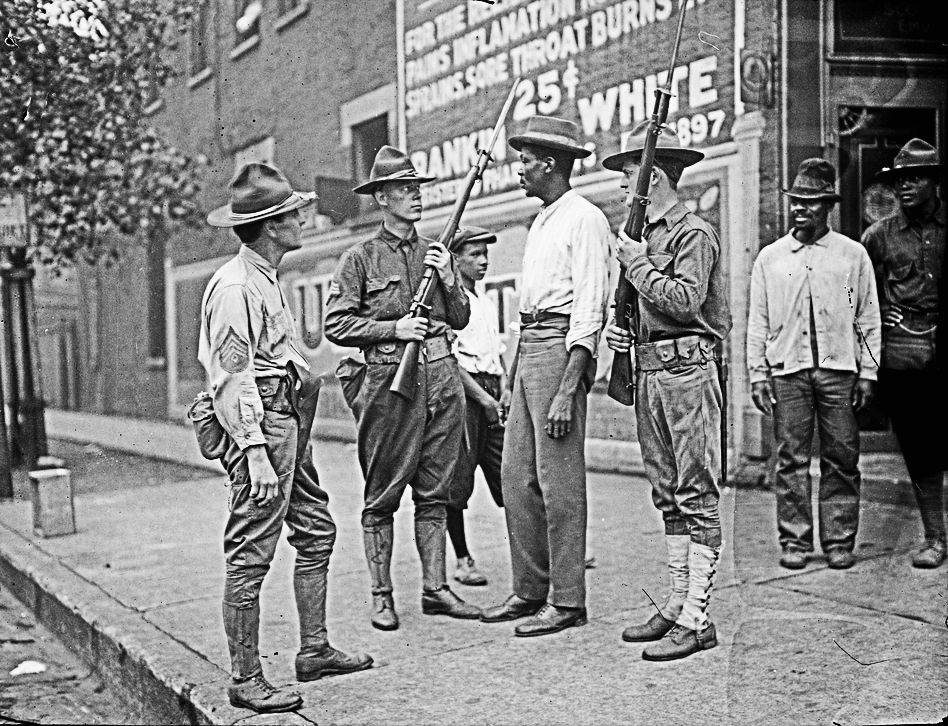
Consequences of Violation
Prosecution.: The Posse Comitatus Act is a criminal statute under which there has apparently never been a prosecution. It has been invoked with varying degrees of success, however, to challenge the jurisdiction of the courts, as a defense in criminal prosecutions for other offenses, as a ground for the suppression of evidence, as the grounds for, or a defense against, civil liability, and as a means to enjoin proposed actions by the military.
Exclusion of Evidence: Allegations that the Posse Comitatus Act has been violated are made most often by defendants seeking to exclude related testimony or physical evidence, but most cases note the absence of an exclusionary rule, often avoiding unnecessary analysis of the scope of the Act and whether a violation has occurred.
Jurisdiction and Criminal Defenses: Defendants have found the Act helpful in prosecutions where the government must establish the lawfulness of its conduct as one of the elements of the offense. Several defendants at Wounded Knee persuaded the court that evidence of possible violations precluded their convictions for obstructing law enforcement officials “lawfully engaged” in the performance of their duties.
Civil Liability: The Eighth Circuit has declared that a violation of the Act might constitute an unreasonable search and seizure for purposes of the Fourth Amendment, giving rise to a Bivens cause of action against offending federal officers or employees.
Compliance: The most significant impact of the Posse Comitatus Act is attributable to compliance by the armed forces. As administrative adoption of the Act for the Navy and Marines demonstrates, the military has a long standing practice of avoiding involvement in civilian affairs which it believes are contrary to the Act, and which date back to military acceptance of civilian authority since the founding of the Republic.
Proposed New Exceptions
H.R. 1986: Would amend title 10 to allow the Secretary of Defense to provide military personnel to assist the Department of Homeland Security when necessary to respond to “a threat to national security posed by the entry into the United States of terrorists, drug traffickers, or illegal aliens”. Specially trained service members could be assigned to assist the Bureau of Border Security and the U.S. Customs Service, but would not be authorized to carry out searches, seizures, or other similar law enforcement activities. The Secretary would be empowered to establish ongoing joint task forces to carry out these activities. Military members would first have to undergo training in issues related to law enforcement in border areas and would have to be accompanied by civilian law enforcement officers. H.R. 1986 passed the House as section 1035 of the National Defense Authorization Act for FY2006 (H.R. 1815), but without a limitation that would have ended the authority after September 30, 2007.
S. 1042 and S. 1043: Senate Defense authorization bills, would add a new section 383 to title 10, which would authorize the Secretary of Defense to use unmanned aerial vehicles and DoD personnel to conduct aerial reconnaissance within U.S. Northern Command's area of responsibility, in order to monitor air and sea traffic along the border and coastline, and to communicate resulting information to the appropriate federal, state, and local law enforcement officials. The activity would be funded from counterdrug appropriations. The prohibitions against military personnel participating in searches, seizures, or arrests would apply.
The opinions expressed in this publication are those of the author and do not necessarily represent the views of the Naval History & Heritage Command
NAVY.mil / Wikipedia / Northern Commmand.mil / Cornell Law School.edu /
CATO Institute.org / RAND (Corporation “Research ANd Development”).org / ARMY.mil / Federation Of American Scientists FAS.org /
What Is the Posse Comitatus Act? (YouTube) 

NAVSPEAK aka U.S. Navy Slang
Sandblower: A person of very short stature.
Sandbox: The pier liberty facilities at Jebel Ali. Sandbox Liberty means travel outside the port of Jebel Ali is not authorized. All one gets is a “beer on the pier”. See “Gerbil Alley”.
Sand Crab: Civil servant working for the Navy. As in “side walking, bug-eyed beach creature”.
San Dog: A sailor stationed in San Diego, or the base itself.
Savy Sue: The nickname of the USS Savannah AOR4, given by her ships' company.
Wiktionary.org

Just for you MARINE
Sailor: The following nicknames are usually acceptable: bluejacket, tar, whitehat; while the following are considered insults: gob, swab, swabbie, swab jockey, squid, anchor clanker, rust picker, deck ape.
Salt, Salty: Salt/salty dog Experienced or well-worn person or object, from the salt that would accumulate after long-term exposure to salt water.
Salty Language: Profanity.
Sandbox: Iraq or other desert areas.
Sand Monster: To bury/hide something in the sand, usually MRE trash and brass. (Locale to 29 Palms).
SARC: Sexual Assault Response Coordinator, a Marine (usually an SNCO) assigned as the point of contact for personnel who are victims of or witnesses to sexual assault. Such duty is often ironically assigned to one of the least tactful/sensitive members of a unit.
Say Again (Your Last): Request to repeat a statement, question, or order, especially over a radio, or as “I say again” to preface a repetition by the sender; the word “repeat” is not to be used in this context, as it calls for a preceding fire mission to be fired again.
Sayōnara: Japanese for “goodbye”.
Wikipedia.org
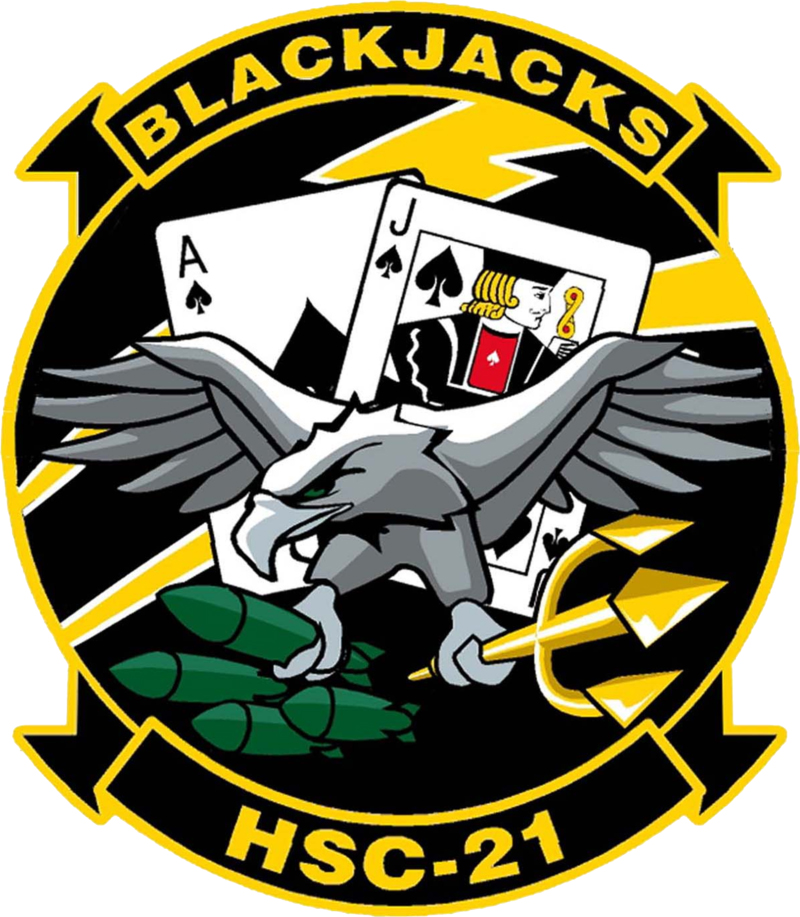
Naval Aviation Squadron Nicknames
HSC-21 Helicopter Sea Combat (HSC) Squadron TWO ONE - nicknamed the “Blackjacks”
United States Navy Naval Air Station - Helicopter Sea Combat (HSC), Naval Air Station - Helicopter Sea Combat (HSC), Naval Air Station North Island, Naval Base Coronado - San Diego, California / Coronado, California / Squadron Lineage: HS-11: October 1, 1977 - November 7, 2005 / HSC-21: November 7, 2005 - present.

Where Did That Saying Come From?
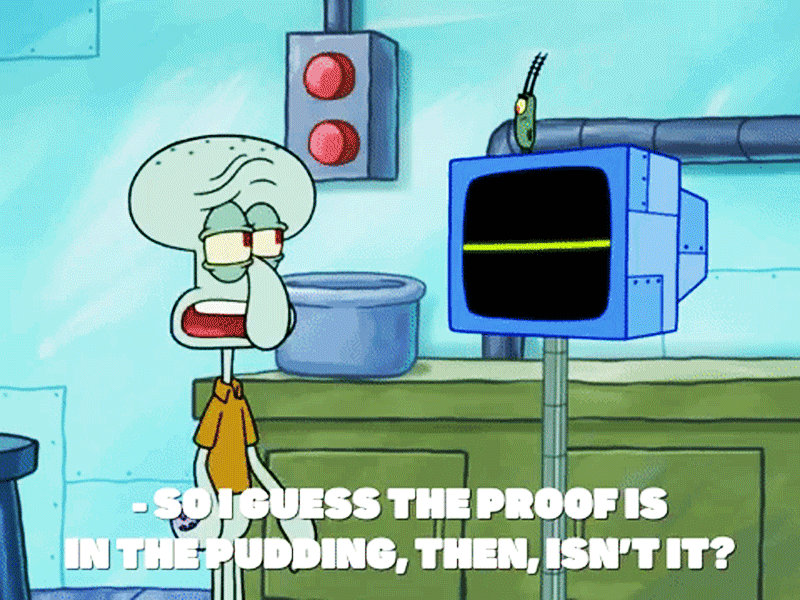
“Proof of the pudding is in the eating:”
Meaning: To fully judge how effective something is you need to use it for its intended purpose.
History: 'The proof of the pudding' is just shorthand for 'the proof of the pudding is in the eating'. That longer version makes sense at least, whereas the shortened version really doesn't mean anything - nor does the often-quoted incorrect variation 'the proof is in the pudding'. The continued use of that meaningless version is no doubt bolstered by the fact that the correct version isn't at all easy to understand.
The meaning become clear when you know that 'proof' here is a verb meaning 'test'. The more common meaning of 'proof' in our day and age is the noun meaning 'the evidence that demonstrates a truth' - as in a mathematical or legal proof. The verb form meaning 'to test' is less often used these days, although it does survive in several commonly used phrases:
'the exception that proves the rule', 'proof-read', 'proving-ground', etc. When bakers 'prove' yeast they are letting it stand in warm water for a time, to determine that it is active. Clearly, the distinction between these two forms of the word was originally quite slight and the proof in a 'showing to be true' sense is merely the successful outcome of a test of whether a proposition is correct or not.
'The proof of the pudding is in the eating' is a very old proverb. The Oxford Dictionary of Quotations dates it back to the early 14th century, albeit without offering any supporting evidence for that assertion. The phrase is widely attributed to Cervantes in The History of Don Quixote.
This appears to be by virtue of an early 18th century translation by Peter Motteux, which has been criticised by later scholars as 'a loose paraphrase' and 'Franco-Cockney'. Crucially the Spanish word for pudding - 'budín', doesn't appear in the original Spanish text. It is doubtful that 'the proof of the pudding' was a figurative phrase that was known to Cervantes.
The earliest printed example of the proverb that I can find is in William Camden's Remaines of a Greater Worke Concerning Britaine, 1605:
“All the proof of a pudding is in the eating.”
A similar thought, published in a work that would have been known to Young is found in Robert Greene's Gwydonius, 1584:
“You shall finde that delaie breedes daunger, & that procrastination in perils is but the mother of mishap.”
It is worth remembering that, as the phrase is quite old, the pudding wouldn't have been a sticky toffee pudding from the sweet trolley, but a potentially fatal savoury dish. In Camden's listing of proverbs he also includes:
“If you eat a pudding at home, the dog may have the skin”, which suggests that the pudding he had in mind was some form of sausage. THE OED describes the medieval pudding as 'the stomach or one of the entrails of a pig, sheep, or other animal, stuffed with a mixture of minced meat, suet, oatmeal, seasoning, etc., and boiled'.
Those of you who have ventured north of the border on Burns Night will recognize this as a fair description of a haggis:
“the great chieftain o' the pudding-race”, as Burns called it in the poem Address to a Haggis, 1786. medieval peasants, faced with a boiled up farmyard massacre, might have thought a taste test to have been a wise choice.
Phrases.org.uk

Science & Technology

Fighting fish synchronize their moves - and their genes
• This is what our universe looks like to x-ray eyes
• European physicists boldly take small step toward 100-kilometer-long atom smasher
• Dark matter hunters’ inconclusive signal grabs headlines
• Drone-delivered soap bubbles could help pollinate flowers
Science AAAS
Scientists find huge ring of ancient shafts near Stonehenge
• Astronomers detect teraelectronvolt emission from the gamma-ray burst GRB 190114C
• Ancient societies hold lessons for modern cities
• Researchers decode jellyfish genomes and unveil its ecological roles
• Scientists produce first open source all-atom models of COVID-19 'spike' protein
Phys.org / MedicalXpress / TechXplore

Bizarre News (we couldn’t make up stuff this good - real news story)
Hubble provides holistic view of stars gone haywire

Source: NASA/Goddard Space Flight Center
Summary: As nuclear fusion engines, most stars live placid lives for hundreds of millions to billions of years. But near the end of their lives they can turn into crazy whirligigs, puffing off shells and jets of hot gas. Hubble has dissected such crazy fireworks in two nearby young planetary nebulas.
The researchers have found unprecedented levels of complexity and rapid changes in jets and gas bubbles blasting off of the stars at the centers of both nebulas. Hubble is allowing the researchers to converge on an understanding of the mechanisms underlying the chaos.
“When I looked in the Hubble archive and realized no one had observed these nebulas with Hubble's Wide Field Camera 3 across its full wavelength range, I was floored”, said Joel Kastner of Rochester Institute of Technology, Rochester, New York, leader of the new study. “These new multi-wavelength Hubble observations provide the most comprehensive view to date of both of these spectacular nebulas. As I was downloading the resulting images, I felt like a kid in a candy store.”
By examining this pair of nebulas with Hubble's full, panchromatic capabilities - making observations in near-ultraviolet to near-infrared light - the team has had several “aha” moments. In particular, the new Hubble images reveal in vivid detail how both nebulas are splitting themselves apart on extremely short timescales --allowing astronomers to see changes over the past couple decades. Some of this rapid change may be indirect evidence of one star merging with its companion star.
“The nebula NGC 7027 shows emission at an incredibly large number of different wavelengths, each of which highlights not only a specific chemical element in the nebula, but also the significant, ongoing changes in its structure”, said Kastner. The research team also observed the Butterfly Nebula, which is a counterpart to the “jewel bug” nebula: Both are among the dustiest planetary nebulas known and both also contain unusually large masses of gas because they are so newly formed. This makes them a very interesting pair to study in parallel, say researchers.
Hubble's broad multi-wavelength views of each nebula are helping the researchers to trace the nebulas' histories of shock waves. Such shocks typically are generated when fresh, fast stellar winds slam into and sweep up more slowly expanding gas and dust ejected by the star in its recent past, generating bubble-like cavities with well-defined walls.
Researchers suspect that at the hearts of both nebulas are - or were - two stars circling around each other, like a pair of figure skaters. Evidence for such a central “dynamic duo” comes from the bizarre shapes of these nebulas. Each has a pinched, dusty waist and polar lobes or outflows, as well as other, more complex symmetrical patterns.
A leading theory for the generation of such structures in planetary nebulas is that the mass-losing star is one of two stars in a binary system. The two stars orbit one another closely enough that they eventually interact, producing a gas disk around one or both stars. The disk is the source of outflowing material directed in opposite directions from the central star.
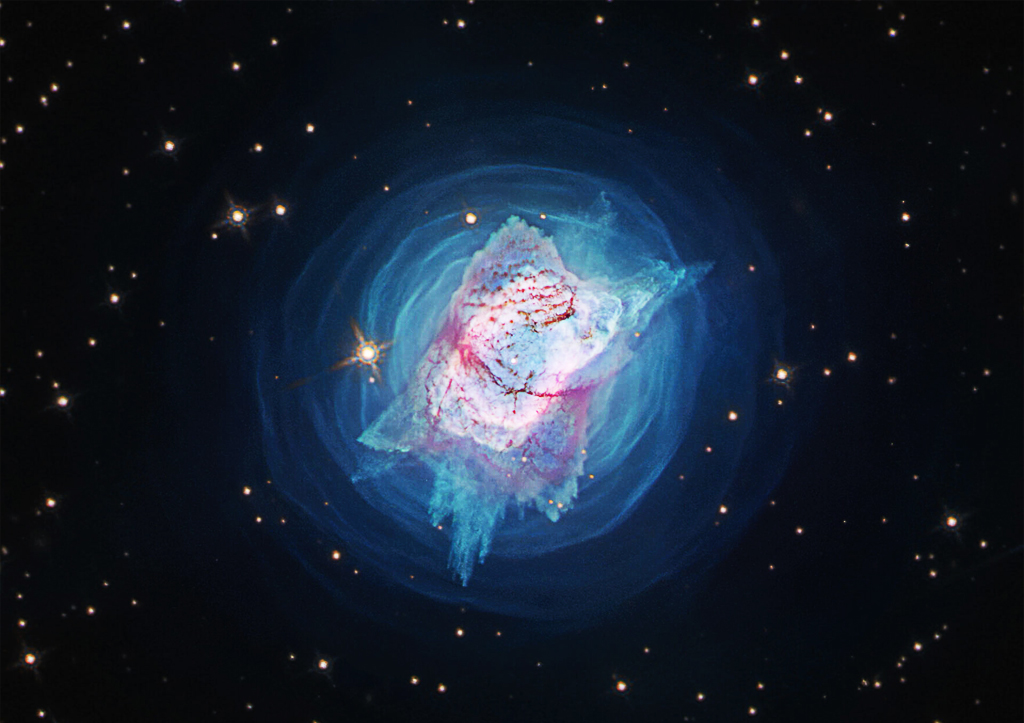
Similarly, the smaller star of the pair may merge with its bloated, more rapidly evolving stellar companion. This also can create outflowing jets of material that may wobble over time. This creates a symmetric pattern, perhaps like the one that gives NGC 6302 its “butterfly” nickname. Such outflows are commonly seen in planetary nebulas.
“The suspected companion stars in NGC 6302 and NGC 7027 haven't been directly detected because they are next to, or perhaps have already been swallowed by, larger red giant stars, a type of star that is hundreds to thousands of times brighter than the Sun”, said team member Bruce Balick of the University of Washington in Seattle. “The hypothesis of merging stars seems the best and simplest explanation for the features seen in the most active and symmetric planetary nebulas. It's a powerful unifying concept, so far without rival.”
The Butterfly Nebula
Imagine a lawn sprinkler spinning wildly, tossing out two S-shaped streams. At first it appears chaotic, but if you stare for a while, you can trace its patterns. The same S-shape is present in the Butterfly Nebula, except in this case it is not water in the air, but gas blown out at high speed by a star. And the “S” only appears when captured by the Hubble camera filter that records near-infrared emission from singly ionized iron atoms.
“The S-shape in the iron emission from the Butterfly Nebula is a real eye-opener”, Kastner said. The S-shape directly traces the most recent ejections from the central region, since the collisions within the nebula are particularly violent in these specific regions of NGC 6302. “This iron emission is a sensitive tracer of energetic collisions between slower winds and fast winds from the stars”, Balick explained. “It's commonly observed in supernova remnants and active galactic nuclei, and outflowing jets from newborn stars, but is very rarely seen in planetary nebulas.”
“The fact that the iron emission is only showing up along these opposing, off-center directions implies that the source of the fast flows is wobbling over time, like a spinning top that's about to fall”, added Kastner. “That's another tell-tale sign of the presence of a disk, which directs the flow, and also a binary companion.”
The 'Jewel Bug' Nebula
The planetary nebula NGC 7027 had been slowly puffing away its mass in quiet, spherically symmetric or perhaps spiral patterns for centuries - until relatively recently.
“In some respects, the changes within this nebula are even more dramatic than those within the Butterfly”, Kastner said. “Something recently went haywire at the very center, producing a new cloverleaf pattern, with bullets of material shooting out in specific directions.”
The research team's new images of NGC 7027 show emission from singly ionized iron that closely resembles observations made by NASA's Chandra X-ray Observatory in 2000 and 2014 as part of earlier research by Kastner, team member Rodolfo Montez Jr. of the Center for Astrophysics | Harvard & Smithsonian, and collaborators. The iron emission traces the southeast-to-northwest-oriented outflows that also produce the X-ray-emitting shocks imaged by Chandra.
“We have a sneaking suspicion that this nebula is a great example of what happens when a red giant star abruptly swallows a companion”, Montez Jr. said.
Science Daily (06/18/2020) 


SONG FACTS

“Bird Dog”  - The Everly Brothers
- The Everly Brothers
Album: “The Everly Brothers - The Everly Brothers' Best”
Released 1958 
“Bird Dog”  was written by Boudleaux Bryant, who co-wrote many of The Everly Brothers' early hits, including:
was written by Boudleaux Bryant, who co-wrote many of The Everly Brothers' early hits, including:
“Bye Bye Love”  and
and
“Wake Up Little Susie” 
with partner Felice Bryant.
This novelty tune finds the narrator comparing a guy named Johnny to a bird dog, because he's always sniffing around the singer's girl. Bird dogs are used by hunters to retrieve birds and other small game animals by tracking their scent. But this particular pooch is veering into dangerous territory. The Everlys warn:
“Hey, bird dog get away from my quail
Hey, bird dog you're on the wrong trail
Bird dog you better leave my lovey-dove alone”
“Bird Dog”  hit the charts two years after Elvis Presley compared his lover to a whiny canine in the #1 hit “Hound Dog”
hit the charts two years after Elvis Presley compared his lover to a whiny canine in the #1 hit “Hound Dog”  .
.
The harmonizing duo maintained that Elvis, who burst on the scene while they were still trying to land a record deal, wasn't an influence on their country-flavored rock and roll tunes. Don Everly explained in 1998:>'
“Elvis didn't have the kind of voice I liked, nor a sound I liked. I was listening to Ray Charles, Brownie McGhee & Sonny Terry, and Bo Diddley.”
The Everlys weren't fond of “Bird Dog”  and were surprised when it became a hit.
and were surprised when it became a hit.
“I thought the song was one of those corny things”, Don explained in the booklet for the duo's 1994 compilation, Heartaches and Harmonies. “Still, it had something. Still does. We don't do it anymore though.”
Brother Phil added:
“‘Bird Dog’ was a strange song. There used to be a ventriloquist on television with Jerry Mahoney, who had a dog called Farfel. Archie [Bleyer, producer] wanted to get Farfel to do ‘he's a bird’, ‘he's a bird’ but we just weren't going for it. We said, ‘Uh-uh!’ Thank God they didn't do it.”
A multi-format hit, “Bird Dog”  peaked at #1 on the Country chart and #2 on the R&B chart.
peaked at #1 on the Country chart and #2 on the R&B chart.
The Everly Brothers official site / Rock & Roll Hall of Fame / Billboard / All Music / Song Facts / The Everly Brothers
Image: The Everly Brothers' Best (album)” by The Everly Brothers

Trivia
● What song does Ferris Bueller sing from the float in the Chicago parade?
Answer to Trivia 
● What “C” word is the name for a two-hulled boat?
Answer to Trivia
● Why were the 1916 Olympic Games cancelled?
Answer to Trivia
● Where did Susie fall asleep in the Everly Brothers song “Wake Up Little Susie”?
Answer to Trivia

A Test for People Who Know Everything
From the Jeopardy Archives Category - “UNITED STATES BILL OF RIGHTS” ($200)
“Per this amendment, freedom of speech cannot be abridged.”
Answer to Jeopardy READ MORE: National Archives.gov
From the Jeopardy Archives Category - “UNITED STATES BILL OF RIGHTS” ($400)
“The Second Amendment notes ‘the right of the people to keep and bear arms’ & the necessity of a ‘well regulated’ this.”
Answer to Jeopardy READ MORE: National Archives.gov
From the Jeopardy Archives Category - “UNITED STATES BILL OF RIGHTS” ($600)
“The Fourth Amendment is very ‘P.C.’, as this is needed before a warrant is issued or a place can be searched & stuff seized.”
Answer to Jeopardy READ MORE: National Archives.gov
From the Jeopardy Archives Category - “UNITED STATES BILL OF RIGHTS” ($800)
“Key phrases in this amendment: ‘Witness against himself’ & ‘twice put in jeopardy’.”
Answer to Jeopardy READ MORE: National Archives.gov
From the Jeopardy Archives Category - “UNITED STATES BILL OF RIGHTS” ($1,000)
“Think fast! Amendment Six promises the accused both a public trial as well as one that is this adjective.”
Answer to Jeopardy READ MORE: National Archives.gov

Joke of the Day

“Husbands Brag On How Their New Wives Household Duties”
Three men were sitting together bragging about how they had told their new wives what their household duties were to be.
The first man had married a woman from Tennessee.
He bragged that he had told his wife she was going to do all the dishes and house cleaning. He said it took a couple days, but on the third day he came home to a clean house and the dishes were done.
The second man had married a woman from Florida.
He bragged that he had given his wife orders that she was to do all the cleaning, dishes and the cooking. On the first day he didn't see any results, but the next day it was better. By the third day, his house was clean, the dishes were done and he had a huge dinner on the table.
The third man married a girl from Long Island.
He boasted that he told her that her duties were to keep the house clean, dishes washed, lawn mowed, laundry washed and hot meals on the table for every meal.
He said the first day he didn't see anything, the second day he didn't see anything but by the third day most of the swelling had gone down and he could see a little out of his left eye just enough to fix himself a bite to eat, load the dishwasher, find a cleaning lady, and telephone a landscaper.
